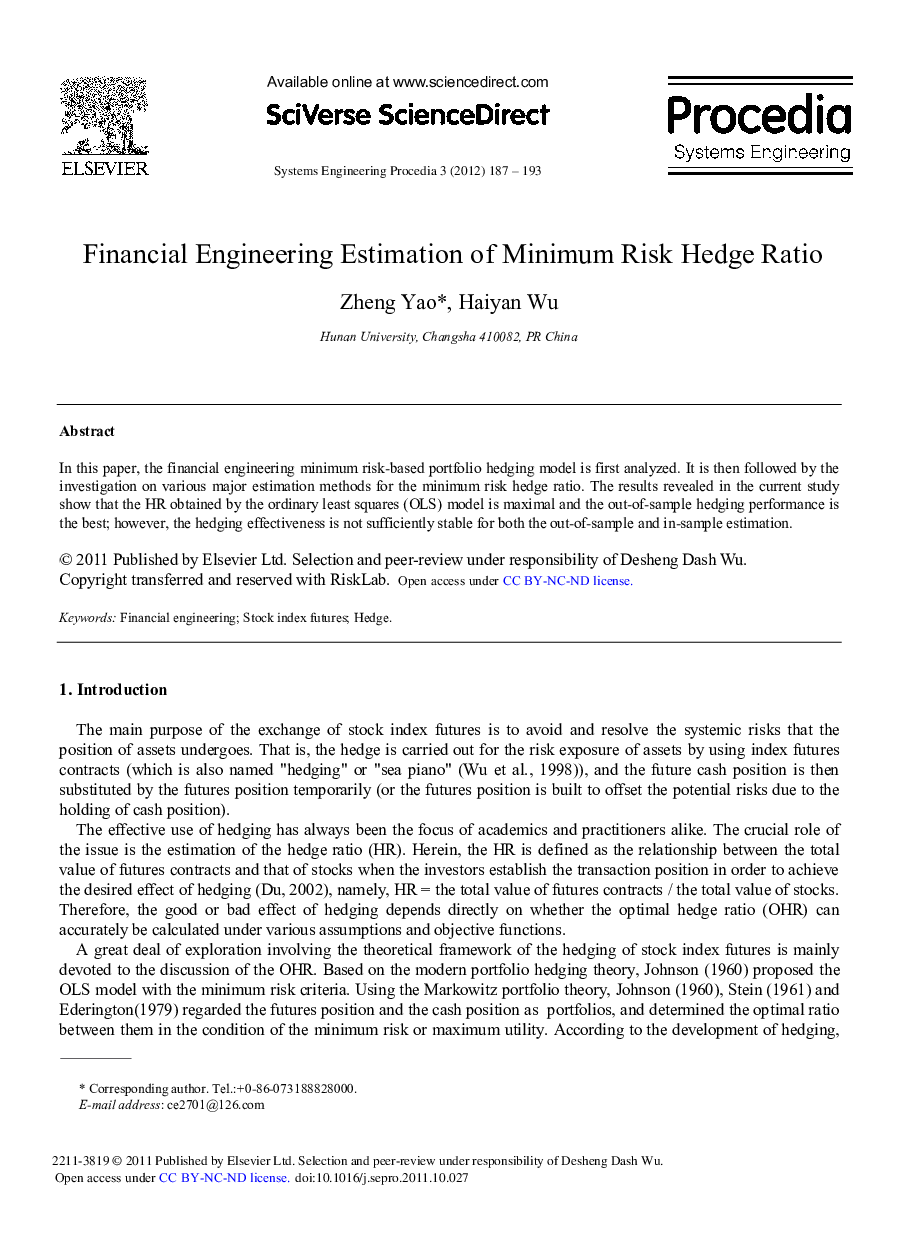| Article ID | Journal | Published Year | Pages | File Type |
|---|---|---|---|---|
| 1144022 | Systems Engineering Procedia | 2012 | 7 Pages |
As an important tool to circumvent the systemic risks in financial engineering, the key for achievement of the performance of stock index futures is dependent on determination of the hedge ratio (HR). In this paper, the minimum risk-based portfolio hedging model is first analyzed. It is then followed by the investigation on various major estimation methods for the minimum risk hedge ratio. Aiming at the newest Shanghai and Shenzhen (HS) 300 index futures hedge, the empirical analyses are eventually performed for the hedge strategies, thus validating the application of these different estimation methods in China's market. The results revealed in the current study show that the HR obtained by the ordinary least squares (OLS) model is maximal and the out-of-sample hedging performance is the best; however, the hedging effectiveness is not sufficiently stable for both the out-of-sample and in-sample estimation. In addition, the in-sample hedging performance accomplished through the bivariate vector autoregression (B-VAR) model is superior to those achieved via other methods. It is manifested further from the results that the HR determined by the error correction (EC) model is minimal and the hedging performances for both the out-of-sample and in-sample data are weak, yet the hedging effectiveness for both of them is stable.
